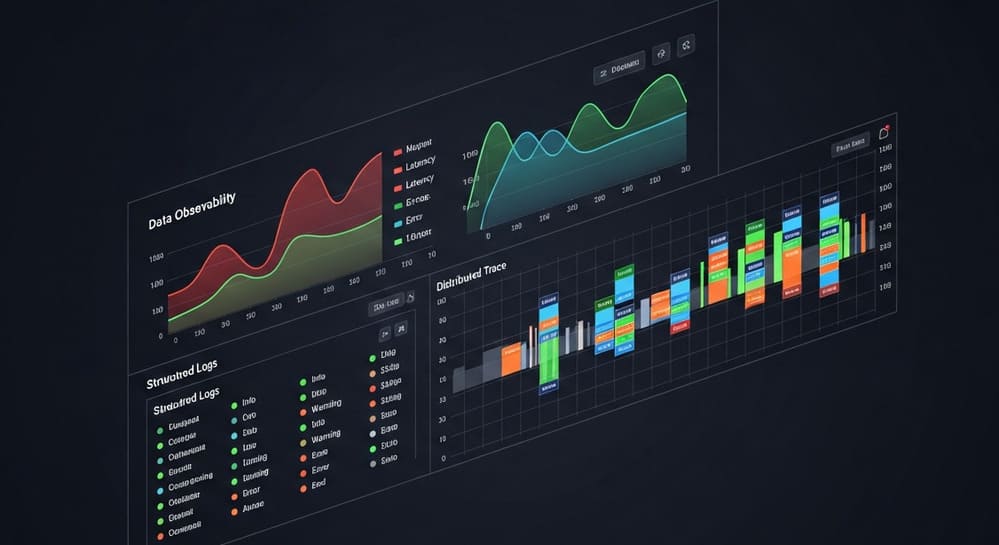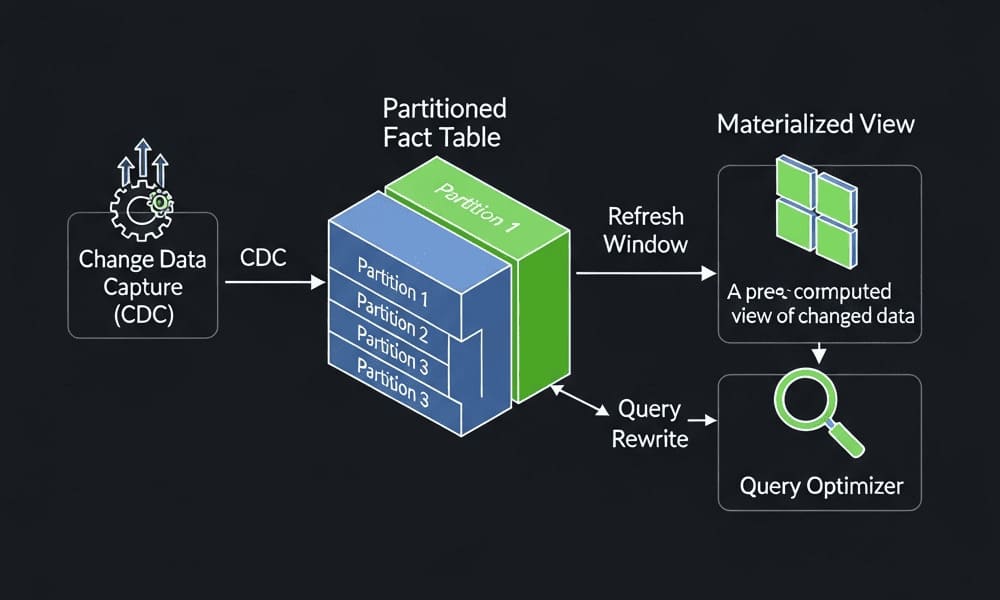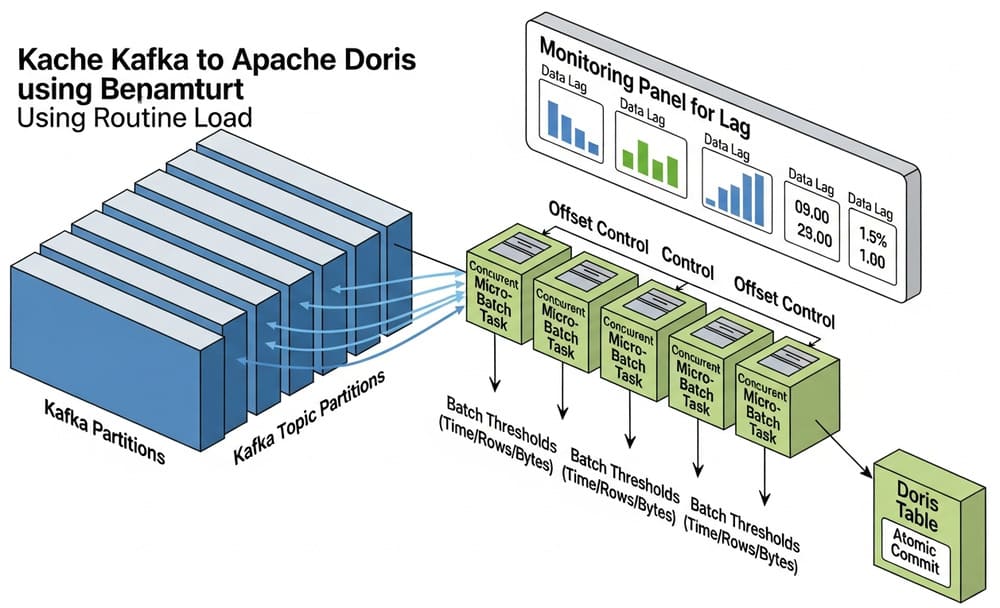Julia for Data Engineers: When It Pays Off—and When It Doesn’t
Julia gives you C-level speed with Python-like syntax. This article shows where Julia fits in a modern data platform (and where it doesn’t), with practical examples for ETL, feature engineering, optimization, and high-throughput services.
Why this matters
You’ve hit the ceiling: Python is easy but slow for tight numeric loops; Scala is fast but heavy to write; Go is great for services but clunky for analytics. Julia sits in the middle: a high-level language that compiles to native code (LLVM), so hot paths run like C without dropping into C. That can turn “overnight” jobs into “coffee break” jobs.
The catch: ecosystem maturity and connectors aren’t as broad as Python/JVM. So you should use Julia surgically—where speed moves the business needle—and keep the rest of your platform on proven tools.
What Julia is (in one paragraph)
- JIT-compiled via LLVM → tight numeric code can match C/Fortran.
- Multiple dispatch → function behavior specializes on argument types (great for data/array APIs).
- Rich type system, optional typing → write fast code without drowning in annotations.
- Batteries for numerics → arrays, linear algebra, autodiff, GPU support.
- Package manager (
Pkg) → reproducibleProject.toml/Manifest.toml.
Where Julia fits in a data platform
Use Julia when compute dominates I/O and you need speed without rewriting in C/Scala:
- Feature engineering & numerical transforms
- Heavy vectorized math, rolling windows, signal processing, embeddings prep.
- Example: aggregating millions of time-series per entity with custom kernels.
- Optimization & simulation pipelines
- JuMP.jl (optimization modeling) for routing, pricing, workforce planning.
- DifferentialEquations.jl for simulation; Turing.jl for probabilistic models.
- High-throughput compute services
- A thin HTTP.jl microservice wrapping a hot numeric function; faster than Python, simpler than writing a C++/Rust sidecar.
- Interchange with the data lake
- Arrow.jl, Parquet.jl, CSV.jl to read/write columnar files, then hand results back to Spark/Snowflake.
Where not to force it
- Orchestration (Airflow/Dagster), warehouse modeling (dbt), SDK-heavy ingestion, and general BI—stick to SQL/Python.
- Streaming frameworks (Flink, Beam, Kafka Streams) are JVM territory.
- Warehouse UDFs: vendors support Python/Java/SQL widely; Julia is niche.
Quick comparison (data-engineering lens)
| Aspect | Julia | Python | Scala/Java | Go |
|---|---|---|---|---|
| Raw numeric speed | ★★★★☆ (C-like) | ★★☆☆☆ (needs NumPy/Cython) | ★★★★☆ | ★★★★☆ |
| Dev speed | ★★★★☆ | ★★★★★ | ★★☆☆☆ | ★★★★☆ |
| Ecosystem for DE | ★★☆☆☆ | ★★★★★ | ★★★★☆ | ★★☆☆☆ |
| Connectors/SDKs | ★★☆☆☆ | ★★★★★ | ★★★★☆ | ★★★★☆ |
| Best use | Compute-heavy transforms, optimization | Glue, ML, orchestration | Distributed engines/streaming | Services/ingestion daemons |
Architecture patterns that work
Pattern 1 — “Fast transform stage” in a lake pipeline
S3/GS → (Parquet) → Julia compute → (Parquet) → Warehouse/Spark
- Use Parquet.jl/Arrow.jl to stream columns, run math in Julia, write back.
- Trigger from Dagster/Airflow via container.
- Good for: feature generation, statistical normalization, custom distance metrics.
Pattern 2 — “Compute microservice” behind your Python jobs
Python app → HTTP call → Julia service (HTTP.jl) → result
- Python keeps the orchestration and IO; Julia handles the hot loop.
- Good for: matching, scoring, optimization that must respond in milliseconds.
Pattern 3 — “Optimization batch” with JuMP
Demand data → JuMP model → Optimal plan → Publish to warehouse
- Great for logistics, scheduling, pricing.
- Jobs run on a schedule; outputs are small but compute is heavy.
Code: minimal, real examples
All snippets assume a fresh project (
julia→]→activate .→add DataFrames CSV Arrow Parquet HTTP BenchmarkTools).
1) DataFrame transform + Parquet IO
using DataFrames, CSV, Parquet, Statistics
# Read a CSV (or Parquet.File for parquet)
df = CSV.read("events.csv", DataFrame) # columns: user_id, ts, value
# Simple groupby with a custom metric
g = groupby(df, :user_id)
agg = combine(g, :value => mean => :value_mean,
:value => x -> std(skipmissing(x)) => :value_std)
# Write to Parquet for warehouse ingestion
Parquet.write("features.parquet", agg)
2) Fast numeric kernel with benchmarking
using BenchmarkTools
# A type-stable function (no globals!)
function smooth!(y::Vector{Float64}, x::Vector{Float64}, α::Float64)
@inbounds @simd for i in eachindex(x)
y[i] = (1-α)*x[i] + α*(i==1 ? x[1] : y[i-1])
end
return y
end
x = rand(10_000_000); y = similar(x)
@btime smooth!($y, $x, 0.1); # expect tens of milliseconds on modern CPUs
3) Tiny compute service (HTTP.jl)
using HTTP, JSON3
function score(v::Vector{Float64})
s = sum(@view v[1:2:end]) - sum(@view v[2:2:end])
return s / length(v)
end
HTTP.serve() do req::HTTP.Request
if req.method == "POST" && req.target == "/score"
body = JSON3.read(String(req.body))
v = Vector{Float64}(body["values"])
return HTTP.Response(200, JSON3.write(Dict("score" => score(v))))
else
return HTTP.Response(404)
end
end
4) Arrow interchange (hand off to Python/Spark)
using Arrow, DataFrames
df = DataFrame(id = 1:5, x = rand(5))
Arrow.write("out.arrow", df) # zero-copy into Pandas/PySpark
In Python,
pyarrow.RecordBatchFileReader("out.arrow")can load this cheaply.
Interfacing with warehouses and systems
- Files first: Parquet/Arrow/CSV are frictionless for round-trips with Spark/Snowflake/BigQuery.
- ODBC.jl / LibPQ.jl: Connect directly to Snowflake (ODBC), Postgres, etc., if you need CRUD (driver availability may vary by OS/container).
- Message buses: Kafka.jl exists but is less mature; prefer pushing results to storage and letting existing ingestion pick them up.
- Orchestration: Package Julia jobs as Docker images; run them from Dagster/Airflow with explicit resource requests.
Performance playbook (don’t skip this)
- Avoid global variables. Put hot code in functions; pass arguments; make types concrete.
- Measure with
@btime.@timelies due to compilation;BenchmarkToolsdoesn’t. - Use broadcasting/loop fusion (
y .= f.(x)) for vectorized math. - Preallocate and use
!functions for in-place ops (less GC). - Enable threading (
JULIA_NUM_THREADS) and useThreads.@threadsfor CPU-bound loops. - Use views (
@view) to avoid copying slices;@inboundsafter tests to skip bounds checks. - PackageCompiler.jl to precompile into a system image for fast startup in serverless/short jobs.
- Profile (
Profile,StatProfilerHTML) to find real hotspots. - Be type-stable. Inspect with
@code_warntypewhen something is suspicious.
Operational tips
- Projects & reproducibility: Commit
Project.tomlandManifest.toml. CI should runjulia --project -e 'using Pkg; Pkg.instantiate(); Pkg.test()'. - Container image: Start from
julia:<version>base; install system libs (e.g., ODBC drivers) explicitly; precompile your package for quicker cold starts. - Logging/metrics: Use
Logging,StatsD.jl, or push custom metrics to Prometheus via a sidecar. - Resource sizing: Julia loves RAM for big arrays; plan CPU-heavy nodes for compute stages.
- Team adoption: Keep surface area small—one repo for compute kernels, simple CLI/HTTP interface, and docs on how to call it.
Real-world use cases (patterns you can copy)
- Anomaly scoring service: Python pipeline extracts features → calls Julia HTTP service for a custom scoring kernel → writes results back to Snowflake.
- Optimization batch: Forecast demand in Python → run JuMP model in Julia → publish allocations as a table for dashboards.
- Time-series featurization: Spark job prepares raw series → Julia container computes dozens of custom features at native speed → parquet out for model training.
When to choose Julia (decision rule)
- If 90% of runtime is pure compute and you’re stuck in Python loops → use Julia for that stage.
- If work is I/O and glue (APIs, orchestration, SDKs) → stay with Python/SQL.
- If you need streaming, connectors, enterprise services → JVM/Go.
- If the pipeline is already fast enough → don’t add languages “for elegance.”
Suggested images/diagrams
- Architecture diagram: Lake → Julia compute stage → Warehouse.
- Benchmark chart: Python loop vs Julia function vs NumPy (use your own data).
- Decision tree: “Should I use Julia here?”
Takeaways
- Julia is a scalpel, not a platform. Use it where speed wins money or saves time.
- Keep boundaries clean: file/HTTP interfaces, clear envs, containerized jobs.
- Start with one high-impact kernel, measure, then decide if you need more.




